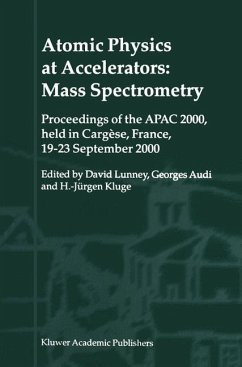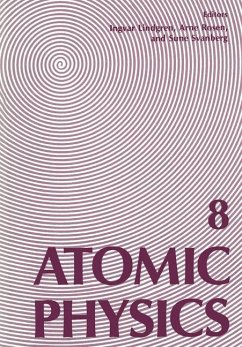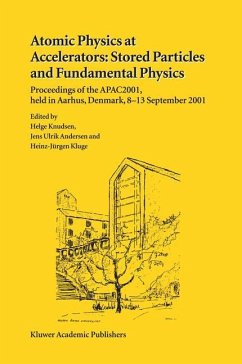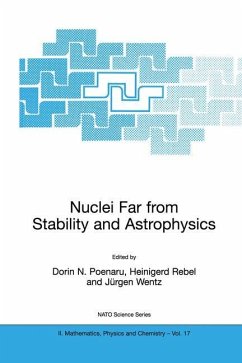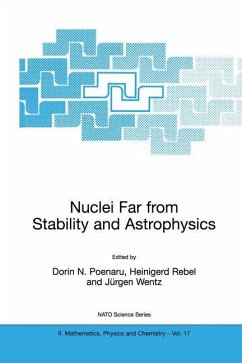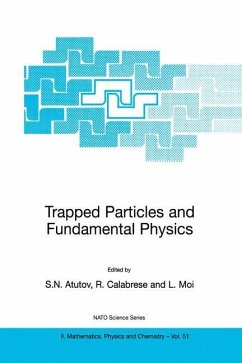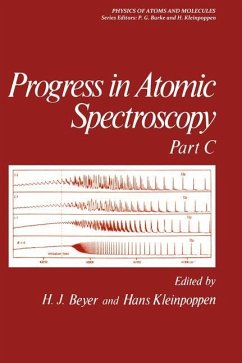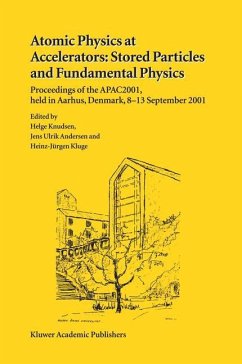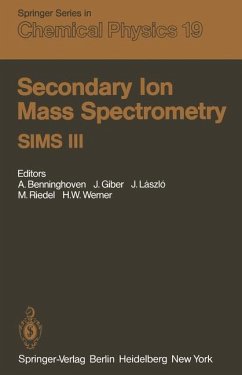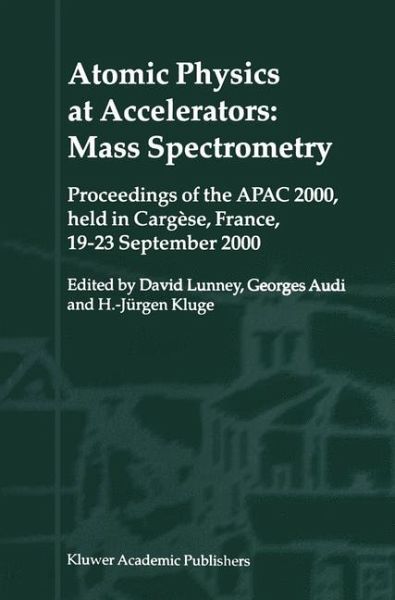
Atomic Physics at Accelerators: Mass Spectrometry
Proceedings of the APAC 2000, held in Cargèse, France, 19-23 September 2000
Herausgegeben von Lunney, David; Audi, Georges; Kluge, Heinz-Jürgen

PAYBACK Punkte
58 °P sammeln!
The search for examples of proton radioactivity has resulted in the discovery of a large number of proton emitters in the region 50 Z 84 [1]. Many of these proton emitters and their daughters are also a-emitters, and in some cases the a-decay chain from the daughter terminates on a nuclide closer to stability whose mass excess is known. This opens up the possibility of using a-and proton-decay Q-values to determine the mass excesses of a large group of nuclei connected by particle decay. The Q-values are derived from the measured kinetic energies of the emitted protons or a-particles. Where th...
The search for examples of proton radioactivity has resulted in the discovery of a large number of proton emitters in the region 50 Z 84 [1]. Many of these proton emitters and their daughters are also a-emitters, and in some cases the a-decay chain from the daughter terminates on a nuclide closer to stability whose mass excess is known. This opens up the possibility of using a-and proton-decay Q-values to determine the mass excesses of a large group of nuclei connected by particle decay. The Q-values are derived from the measured kinetic energies of the emitted protons or a-particles. Where the decay chains are not connected to nuclei with known mass excesses, proton separation energies can be measured in some cases and derived in others. For the a-decay ofthe parent nucleus (Z, A) to the daughter (Z - 2, A - 4), the energy and momentum relations used to convert between Q-value, mass (M) and mass excess (ME) are: M(4He)E", (1) M(Z - 2, A - 4)Erecoil, (2) Q", E", + Erecoi, ME(Z,A) Q", + ME(Z - 2, A - 4) + ME(4He). (3) In practice, one uses M(4He) ~ 4 and M(Z - 2, A - 4) (A - 4), so that Equation (3) becomes ME(Z, A) = E", (_A_) + ME(Z - 2, A - 4) + ME(4He). (4) A -4 Similarly, for protons, we have ME(Z, A) = Ep(_A_) +ME(Z - 1, A-I) +ME(lH).



